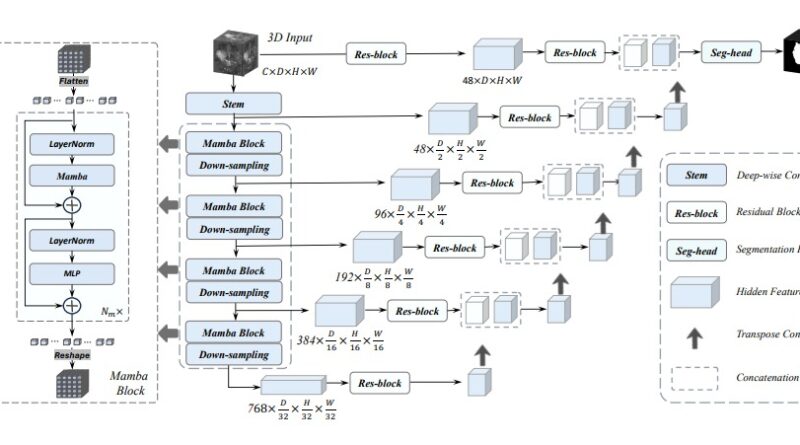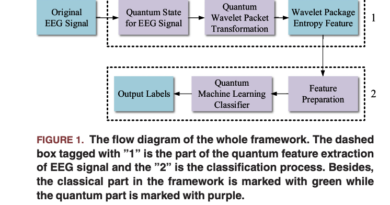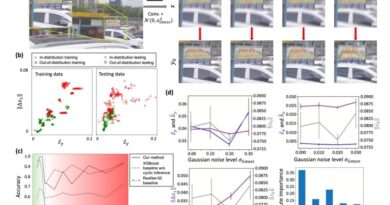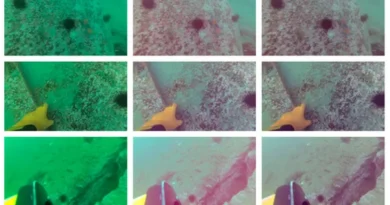SegMamba: A Novel 3D Medical Image Segmentation Model
In the field of medical imaging, accurate segmentation of 3D medical images plays a crucial role in diagnosis and treatment planning. Traditional convolutional neural networks (CNNs) have made significant advancements in this area, but they often struggle to capture long-range dependencies within whole-volume features. To address this limitation, a team of researchers from the Beijing Academy of Artificial Intelligence has introduced SegMamba, a novel 3D medical image segmentation model designed to effectively capture long-range dependencies at every scale [1].
The Need for Effective 3D Medical Image Segmentation
Segmentation of medical images involves identifying and labeling different structures or regions of interest within the image. Accurate segmentation enables medical professionals to detect abnormalities, quantify volumes, and plan interventions. However, 3D medical images often contain complex structures and variations in intensity, making segmentation a challenging task.
🔥Explore 3500+ AI Tools and 2000+ GPTs at AI Toolhouse
Traditional CNN-based approaches for 3D medical image segmentation have limitations in capturing long-range dependencies within the input volume. These models struggle to effectively capture global information and context, which is critical for accurate segmentation. As a result, there has been a growing interest in developing models capable of capturing long-range dependencies within whole-volume features.
Introducing SegMamba
SegMamba is a state-of-the-art 3D medical image segmentation model that leverages the principles of state space modeling to effectively capture long-range dependencies within whole volume features at every scale. It combines the U-shape structure with Mamba to achieve remarkable performance in modeling volumetric data [1].
Mamba, a state space model (SSM), was initially introduced to efficiently model long-range dependencies through a selection mechanism and a hardware-aware algorithm. The researchers extended this idea to the field of medical image segmentation, where capturing long-range dependencies is essential for accurate segmentation. By integrating Mamba within the U-shape structure, SegMamba can effectively capture global information and context in 3D medical images.
Capturing Long-Range Dependencies at Every Scale
Traditionally, convolutional neural networks have used depth-wise convolution with larger kernel sizes to capture a wider range of features. However, this approach alone is insufficient for capturing relationships across distant pixels. To address this issue, SegMamba utilizes the Mamba model to capture long-range dependencies at every scale within the input volume.
The integration of Mamba within the U-shape structure allows SegMamba to effectively capture global information and context, enabling accurate segmentation of 3D medical images. By modeling whole-volume features at various scales, SegMamba ensures that long-range dependencies are captured, leading to improved segmentation performance.
Advantages of SegMamba over Traditional Approaches
SegMamba offers several advantages over traditional CNN-based and transformer-based approaches for 3D medical image segmentation. Here are some key benefits:
- Efficient Modeling of Long-Range Dependencies: By leveraging the principles of state space modeling, SegMamba efficiently captures long-range dependencies within whole volume features. This results in improved segmentation accuracy compared to traditional approaches.
- Superior Processing Speed: Despite modeling whole-volume features, SegMamba maintains superior processing speed compared to transformer-based methods. This is achieved by leveraging the efficiency of the Mamba model and its selection mechanism.
- Effective Contextual Understanding: SegMamba excels in capturing global information and context in 3D medical images. This enables the model to make accurate segmentation decisions by considering the relationships between distant pixels.
Experimental Validation
To validate the effectiveness and efficiency of SegMamba, the researchers conducted extensive experiments on the BraTS2023 dataset. The experiments demonstrated SegMamba’s superiority over traditional CNN-based and transformer-based methods in 3D medical image segmentation tasks [1].
Unlike transformer-based methods, SegMamba leverages the principles of state space modeling to excel in modeling whole-volume features while maintaining superior processing speed. Even with volume features at a resolution of 64 × 64 × 64, SegMamba showcases remarkable efficiency.
Conclusion
SegMamba, the novel 3D medical image segmentation model introduced by researchers at the Beijing Academy of Artificial Intelligence, offers a significant advancement in capturing long-range dependencies within whole-volume features. By combining the U-shape structure with Mamba, SegMamba achieves remarkable performance in accurately segmenting 3D medical images.
The integration of Mamba allows SegMamba to effectively capture global information and context, enabling accurate segmentation decisions. With its efficiency and superior processing speed, SegMamba demonstrates promising potential for improving the accuracy and efficiency of medical image segmentation.
Further research and development in this area are expected to enhance the capabilities of SegMamba and other state-of-the-art models, ultimately benefiting the field of medical imaging and improving patient care.
Check out the Paper and Github. All credit for this research goes to the researchers of this project. Also, don’t forget to follow us on LinkedIn. Do join our active AI community on Discord.
If you like our work, you will love our Newsletter 📰




